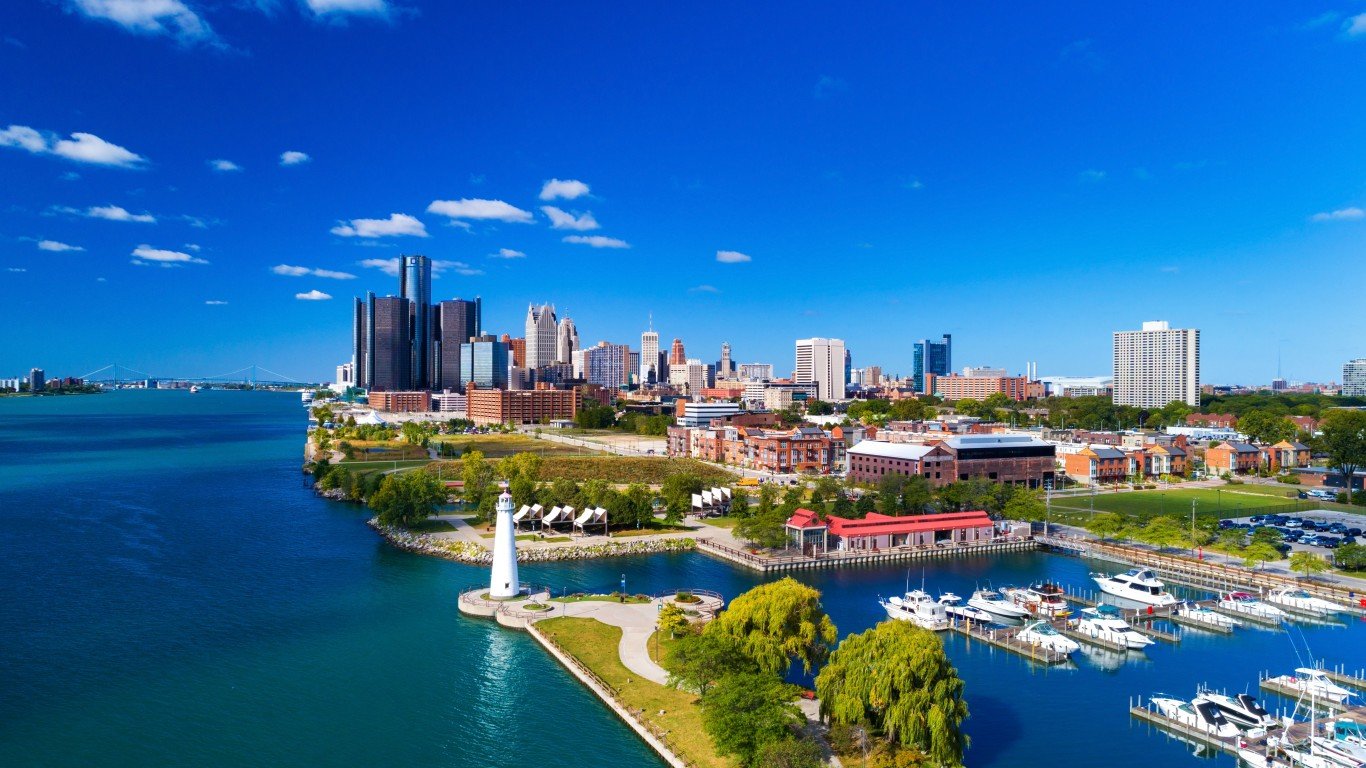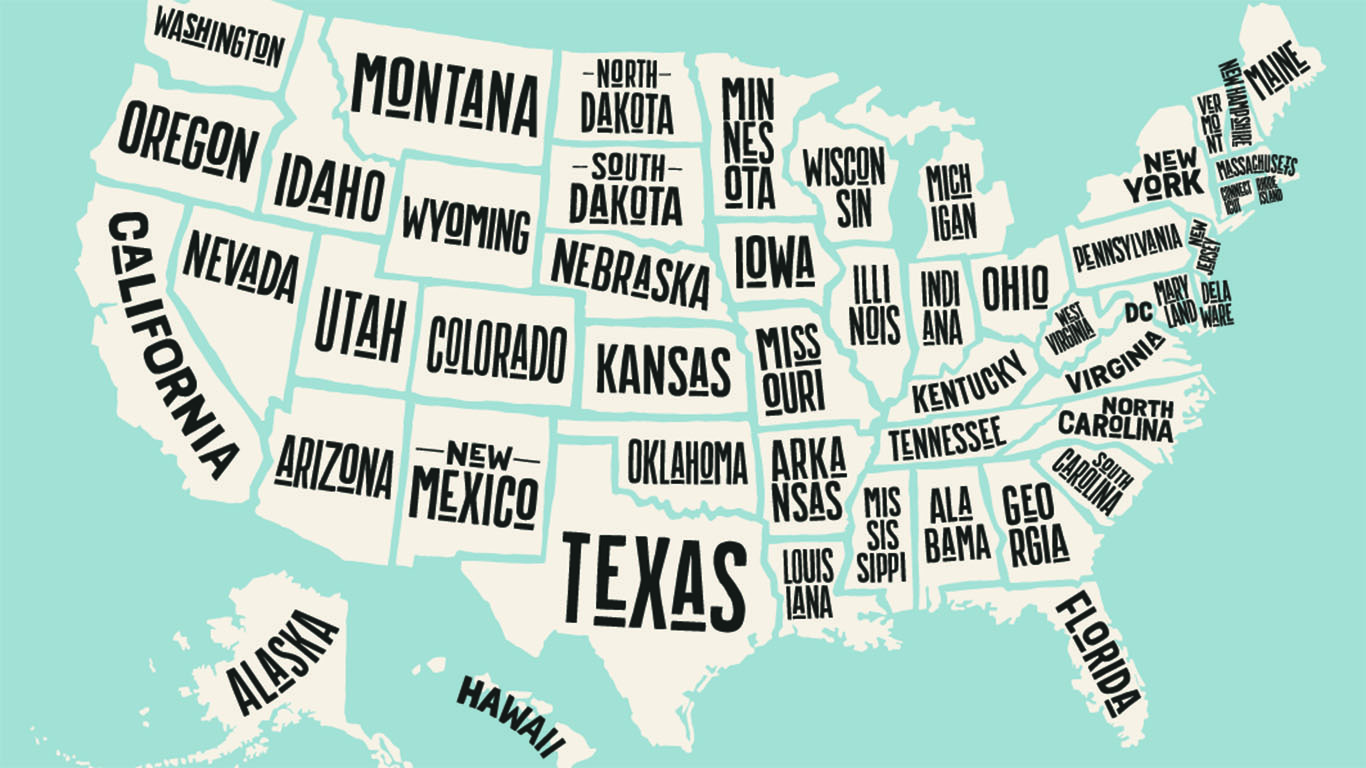Michigan
Michigan became the 26th U.S. state on January 26, 1837. With a current population of 10.0 million, Michigan is the 10th-most populous state in the country. The state ranks in the lowest third of the best states to live in based on key measures like unemployment, poverty and average life expectancy at birth.
The state’s population has grown much more slowly than that of most states in recent years. Over the 10-year period to 2019, Michigan’s population grew by 0.3%, well below the comparable national population growth rate of 6.6%.
Michigan’s unemployment rate in 2018 was 4.1%, higher than the national rate of 3.9%. A stronger job market would likely lead to greater financial security for more state residents, as Michigan’s poverty rate of 14.1% is considerably higher than the national average of 13.1%.
Crime in Michigan
Michigan’s violent crime rate of 449.4 incidents for every 100,000 residents is well above the national average of 380.6 per 100,000. In 2018, there were 551 murders in the state, fewer than in two-thirds of all states.
The state’s incarceration rate of 508 adults per 100,000 residents 18 or older is lower than in most other states. There were 44,918 violent crimes committed in the state in 2018, with about half occurring in Detroit. Muskegon Heights, just south of the Lower Peninsula city of Muskegon, is the most dangerous city in the state with 1,238.8 violent crimes for every 100,000 people.
The Michigan Economy
With a 2018 gross domestic product (GDP) of $528.0 billion, Michigan’s economy is among the largest third of the 50 states. Its largest industry is ambulatory health care services, which employs 206,999 people statewide and generates about 4.0% of the state’s total GDP. Between 2013 and 2018, the total economic output of the state’s top industry rose by 12.4%. Overall economic growth in Michigan totaled 2.7% in 2018, below the national average economic growth of 2.9%.
Michigan’s underemployment rate (which accounts for unemployment and people who have taken part-time work out of necessity) is 7.6%, ranking the state in the middle third among the most difficult states in which to find full-time work.
Employment opportunities tend to go up with educational attainment. In Michigan, less than a third (31.9%) of the state’s adults have a bachelor’s degree, below the national average of 32.6%. And 90.9% of the adults in the state have at least a high-school diploma, above the national rate of 88.3%.
Michigan’s median household income of $56,697 is well below the national median of $63,179.
Thank you for reading! Have some feedback for us?
Contact the 24/7 Wall St. editorial team.













